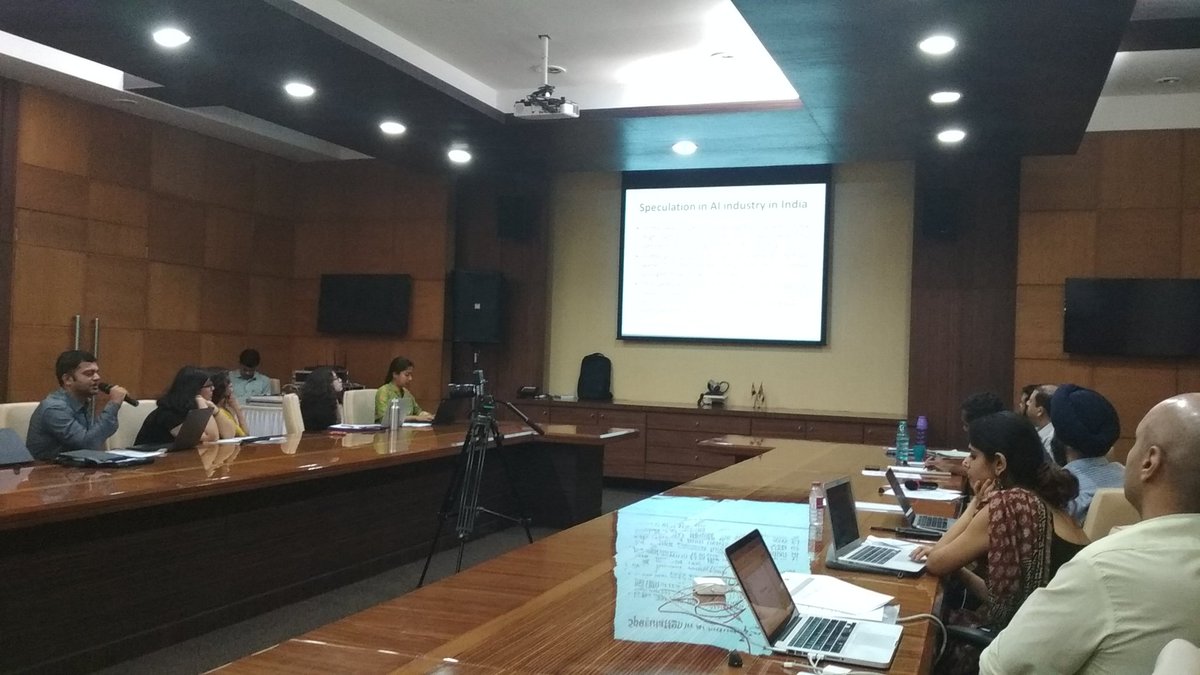the-ken.com/story/what-ai-…
I have heard these sort of comments a lot in various flavours from different #HealthIT
They start blaming doctors, directly or indirectly saying that this is a magic solution which will revolutionalise health and save 20 crores people per year, but this dull headed docs are not able to see the potential and / or afraid of technology
First and foremost
There are four levels of health care
0. Basic Care : Sub Centres
1. Primary Care eg PHCs
2. Secondary Care eg Taluk Hospitals
3. Tertiary Care eg Medical Colleges
4. Quarternary Care eg TNGMSSH
Then there are types of organisations
1. Run by Central Government eg AIIMS, Armed Forces
2. Run by State Government eg Madras Medical College, All GH, All PHC
3. Run by Quasi Government Bodies / Factories for their employees
5. Run by Businessman to earn money, but on paper is run by Trusts eg most private medical colleges
6. Professionally Run Corporate Hospitals eg Apollo
8.10 bedded nursing homes run by a single doctor
9. Single Doctor Outpatient Clinic
So
If you place the Level of Care on X Axis and Type of Organisation on Y Axis
and make a 9x5 matrix
(Technically it is 45, but certain combinations don't exist)
Now
As a HealthIT Startup
You need to
1. Know these levels and Management types
2. Know the Challanges in Each of these types
3. Know the Finances in Each of these types
5. Know Doctors in which of these types of hospitals will find it useful
6. Know Management of which of these types of hospitals will actually be able to invest the money for this
They get the product design from
1. Central Institutes
4. Run by Trusts / Real NGOs to serve people eg Aravind Eye Hospital,
6. Professionally Run Corporate Hospitals eg Apollo
and design the product
1. Most of the IT Startup Engineers have visited only these type of hospitals from their childhood
2. Doctors in these hospitals are ready to innovate
The product is designed well
They do a pilot
The doctors in 1,4,6 hospitals are happy
They even sell 10 to 20 numbers in these hospitals
But
When they want to expand
They hit a road block
Why ?
Because
1. The product designed for 1,4,6 may not adequately cater to the needs of others
End Result
The Sales Dip after the initial Mount and the Valley of Despair or Valley of Death is reached
#DunningKruger
And
Funders get exasperated
Promoters get struck and depressed
A. Find a Good Consultant who is well versed with (1) Both IT and Health (2) Both Government and Private healthcare (3) Both Medicine and Economics
at an early stage and learn from him
2. State Government eg Madras Medical College, All GH, All PHC
7. 40 to 50 bedded hospitals run usually by few doctors in partnership
8.10 bedded nursing homes run by a single doctor
9. Single Doctor Outpatient Clinic
Be it 2 or 7/8/9
They have common factor
1. They are always running short of money
2. They cannot turn away a patient
4. The people who come to them cannot afford much
5. Insurance is not common here
6. The patient wants quick treatment and trusts the doctor more (as compared to 1/6)
7. Everyday is a Disaster Management
The load other hospitals encounter during natural disasters / accidents is encountered daily here)
So
When you go with a new product to these hospitals
It will be accepted only if
1. It reduces the Cost of Health Care delivery
2. It reduces the Time of Health Care Delivery (so that patient can go back home quicker or doctor can take rest)
3. It is technically advanced
It is Cost > Time > Technically advanced which matters more in 2/7/8/9 while in
1/4/6 it may be Technically advanced > Time > Cost which is the order of decision making
Very few professionals had understood and accepted it
Mostly,
They consider that the doctor at the other end is a dull man who does not understand technology
(sorry if this comment comes under stereotyping, but i am not sure whether the point
So
When you pitch your product or service to 2/7/8/9, it will be looked up if it is
1. Cheap, But does the work in same time with same technology
2. Cheap, does the work in less time with same technology
So
If your solution is Cheaper than the existing version, the management will look into it
How many of the IT Startup Promoters ever discuss the cost as the first point
Very few
They won't give an answer
The answer will be very vague like
We are working on the concept
It is negotiable
We will work on it
When Some one Says this answer,
The doctor or Administrator of 2/7/8/9 will immediately
Don't ever approach a doctor in 2/7/8/9 if you are not sure of the cost
You will be treated like an LKG Kid saying Baba Black Sheep or Tirukural
The appreciations and head nods are for your well made PPT and Flawless English only
You will sell your product
If your product is cheap
Assume your product is costly
Then you have to convince that the cost is justified since it saves time
Again
This saved time should be considerable enough to reduce the cost
Else your proposal won't proceed
After Surgery, we need to stich the skin. We use thread - silk or prolene - which costs Rs 300)
The alternative is staplers which cost Rs 1100
That is almost four times
Yet
Most private hospitals in 7/8/9 have moved on to Staplers
Why ?
If you suture with thread, it may take 15 minutes
But
Stapler may take 2 minutes
Now
Most of the Operation Theatres cost Rs 6000 per hour
So
Cost of Suture = 300 + 1500 OT Cost = 1800
Cost of Stapler = 1100 + 20 OT Cost = 1300
in 7/8
The Stapler is being used only because it saves Rs 500
And not because it is technically advanced
Assume that this stapler costs Rs 5000
It will be used in 1, 3, 4 for sake of its technical advancedment
It will be used in 6 because anyhow the patient is going to pay
Patient coming to 6 is ready to Pay Rs 4700 more to have a technically advanced treatment
But
Patient coming to 7/8 is not ready
So
A stapler will be preferred to thread in 6 even if it is 5000
2 - State Government Hospitals - too operate on this principal, but at very macro level and the stapler / suture example
So
You can sell your product to the doctor
if it is
1. Cheaper than exisiting product
2. Costlier than existing product but saves time and ONLY IF THIS SAVED TIME LEADS TO SAVING COST
Read the words carefully
"Sufficiently" technically advanced
"Real" Impact
For Example
The "Sufficiently" advanced Product that produces "Real" impact is a MRI or at least 62 Slice CT
32 Slice CT, in this case is not a Sufficiently" advanced Product that produces "Real" impact
The person at the other side of table may not consider it so
he does not value your product not because he does not understand what your product can do
It is because
You do not understand how that hospital operates and what are their priorities
Other than the
Cost / Time / Technology, there are few factors too
They see sales pitches every day
They buy drugs, they buy gloves, they buy catheters, they buy Cath labs
So
They are well accustomed to all sales pitches
"this is a new technology which you need to use" sort of approach will never work in doctors in 2/7/8/9 while it will work like a charm in 2/3/4/6
What happens is that the IT StartUp Team has already sold the product to 1/3/4/6 using the above sales pitch
They are very very confident about their pitch idea
They try the same tactic in 2/7/8/9
Sadly
The doctor or administrator here has his priority different
This is why
Startups get struck after pilot and never reach the masses







